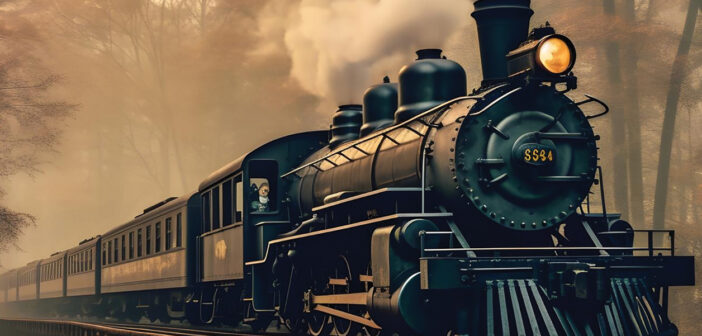For our spring UK trip, the main point of interest for my five-year-old son, Arthur, was the promise of a visit to the National Railway Museum in York. It was the carrot dangled before him to inspire good behavior, push through difficult kindergarten days and the highlight of many conversations in the months preceding the journey.
To Arthur’s chagrin, our first stop in England was not the “train museum” (as he was wont to call it, constantly, in every conversation) but instead, a few days romping around the Yorkshire Dales, exploring the greenery and the villages, stopping at tiny pubs and restaurants that looked like they were renovated in the 1970s and then permanently fixed to that time period. Along our rambles in the countryside, we stumbled into a defunct rail station, complete with tracks overgrown with ivy and brave, early spring wildflowers. My son stopped, eyes wide and bright with awe. This, to him, was clearly the train museum we had discussed for weeks, and it was by his description, “very closed” and not the life-altering experience he had eagerly awaited. Arthur was relieved to discover this was merely a rail stop that had been shut down, which led to a lot of questions I hadn’t the answers to, and I’m ashamed to say that I also hadn’t the patience for whilst hiking through muck and mire, my boots growing more soiled every moment the English drizzle fell all over us.
Day four of our trip found us heading to York, (finally, as Arthur said). The plan was to stop at the National Railway Museum before checking into our hotel, and finally make good on our promise to see the trains. Now, when Arthur was about 11 months old, we traveled to York and visited this same museum. He obviously does not remember it, but the tales we told him of the experience have lived large in his mind.

Alas, the museum was in a state of renovation. The once expansive and well-appointed facility, organized almost as if it were an impossible train station out of time, looked … different. Usually, luxury train cars that served the nobility with beautiful, hand-painted china laid out next to crystal goblets appearing as though someone had taken a sip just a moment ago, but stepped out just before you poked your plebeian nose into the window. The first Japanese high-speed train next to the famous Flying Dutchman, each a few steps apart, appearing as though they’ve arrived on schedule and await ticketed passengers to clamber aboard.
But, the current state of the National Railway Museum is more akin to an assorted flea market of trains; fancy passenger cars carelessly parked next to a coal car of indifferent importance and dubious condition. The dirty, early-20th century cargo train car neighboring a fearsome, midnight black locomotive, and assorted trains typically displayed to perfection all hodge-podged together. Another room appeared as though an antique store had vomited its contents – all of the train decor, every display from the museum. Old timetables, more china services than you could imagine, tiny model trains, railway signs, conductor’s hats and train whistles. All manner of delicately carved, beautifully upholstered dining chairs, all remnants of bygone railroad days.
This plethora of artifacts, although fascinating, was overwhelming in its lumpen presentation for an adult, and unspeakably boring to a five-year-old. The magic of the train museum seemed to shrink, so that only the gift shop seemed to hold any interest. Luckily, admission to the museum itself was free, and 30 British pounds worth of train-themed toys seemed to salvage the disappointment.
Another travel lesson learned: always do your research – and then, do it again right before you leave. Choo-choo!















